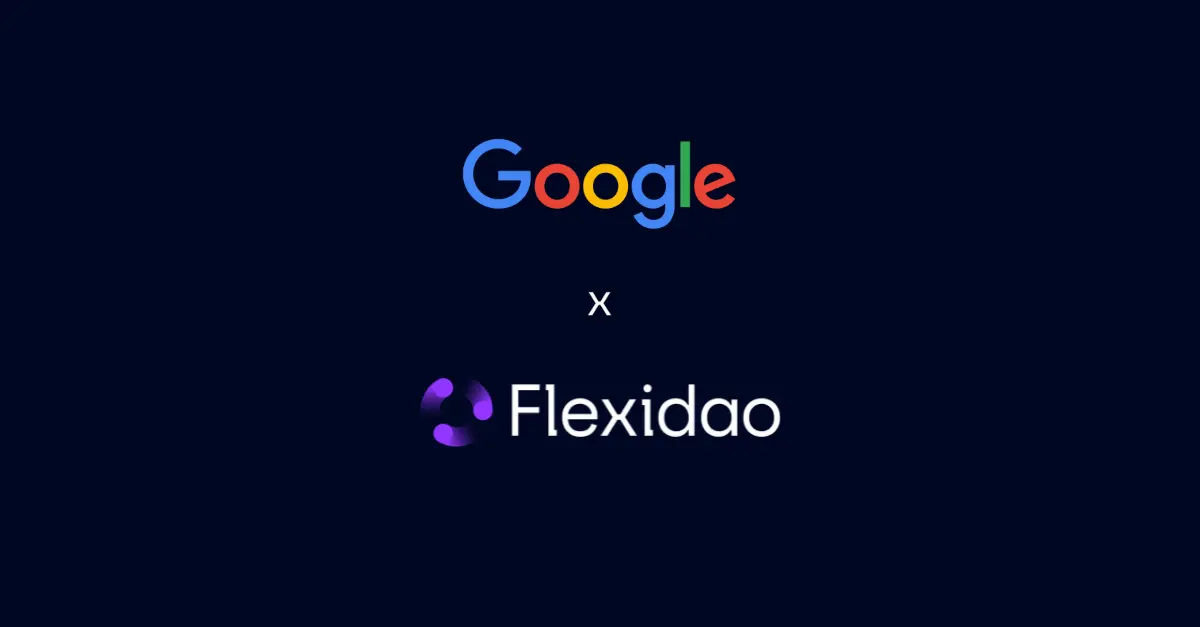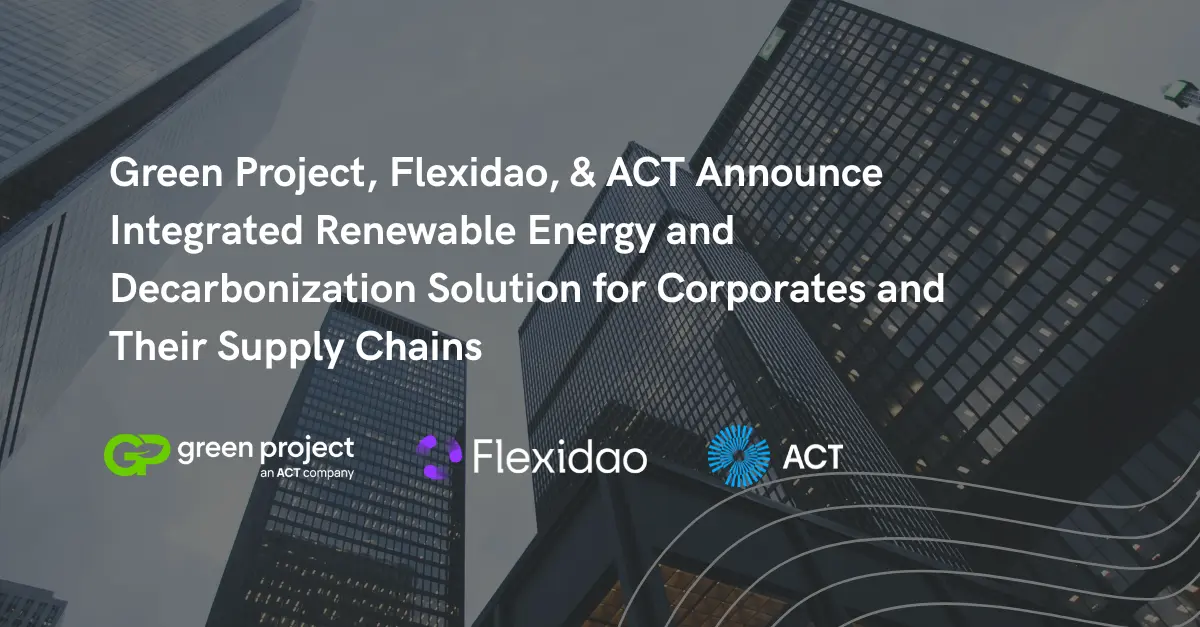How to Know What Renewable Energy Certificates You're Buying
How to Know What Renewable Energy Certificates You're Buying
Make informed decisions on renewable energy certificates with Flexidao. Navigate the complexities of RECs, EACs, and GOs with confidence.

The response to the climate change crisis is slowly gaining momentum and companies worldwide are starting to have an impact. Companies can have a positive impact in a number of ways but green energy procurement is the single greatest opportunity they have to make a difference. However, there are many ways of procuring green energy and each method has its advantages and disadvantages. A common method to do this is through the purchase of renewable energy certificates.
One of the easiest and most straightforward ways for a company to green their energy supply is to purchase Energy Attribute Certificates (EAC’s). EAC’s allow a company to claim zero carbon emissions on their electricity use in Scope 2 reporting, according to the GHG Protocol. These certificates go by various names in different regions of the world such as Guarantees of Origin (GO’s) in Europe and Renewable Energy Certificates (REC’s) in North America.
How do Renewable Energy Certificates Work?
Whilst there are many different types of renewable energy certificates, they all have the same fundamental concept. That is, that one certificate represents the production of 1 MWh of renewable electricity, be it from solar, wind or other forms of clean power.
Renewable energy certificates have been designed to work as a tracking mechanism for any renewable electricity created. Tracking is required once the renewable power has been transmitted to the grid, because it becomes indistinguishable from any other form of electricity. The electrons generated by a solar or wind farm mix with other sources such as coal and gas derived electricity. REC’s solve this issue by unbundling the renewable aspect from the physical power. This allows for bilateral purchasing of renewable electricity outside the scope of a physical power contract.

The illustration above shows how the process works. A business will take power from the grid which will be designated as non-renewable or “Brown Power”, irrespective of the source. If the business wants to use green electricity, they will need to purchase the renewable certificate in addition to the “Brown Power”.
These types of tracking mechanisms are open to exploitation so a high-degree of auditing and compliance is required. Historically, many certificate system’s had issues with double-counting but with strong system oversight, this issue has largely been rectified.
Why is Transparency of Renewable Certificates an Issue?
It’s very easy to purchase renewable energy through certificates. The hard part is getting more detail on what you’re purchasing and if it aligns to your company’s goals and principles.
Take the typical scenario of a corporate green energy contract. A company will tender its volumes to energy suppliers who will offer a power price and a premium for green power. A price will be agreed upon, and usually, the conversation on green power between a supplier and an energy purchaser will end there. This can be for a number of reasons but is likely due to the purchaser believing that all green power is the same or they assume that the green power will come from power plants in their home country.
After the first step of buying green energy, what if the energy or sustainability manager involved wanted to take it further by understanding exactly where the power came from? This is where things start to get messy. If a supplier hasn’t specifically assigned certificates from a particular plant, it will mean that the power is coming from its pool of green certificates that it has purchased.
Energy suppliers source their green certificates through a number of different options which can make it difficult to pinpoint where the power is coming from. If we take the United Kingdom as an example, the regulator Ofgem publishes information on supplier purchases of GO certificates that they use in their Fuel Mix Disclosure to customers. The data for 2019 shows that UK suppliers are purchasing non-UK certificates from thousands of different generating plants, mainly based in Italy and Spain.
For industrial and commercial customers in the UK, they may think that they’re supporting local industry and reducing local emissions by purchasing green power through a supplier. But, this may not necessarily be the case.
For this reason, if companies want to have a measured impact on the economy and environment, then simply procuring green energy shouldn’t be the first and only port of call. Understanding where the power comes from and assessing if the impact of the purchase aligns with the company’s motives is a critical next step. This requires taking consideration of concepts such as additionality, proximity, and synchronicity.
How to Increase Transparency and Oversight of Green Procurement
The good news is that there are options available to increase transparency of green procurement. At a very basic level, this could mean creating better relationships with your energy supplier or green certificate broker. Stronger relationships will result in easier access to the data that is required. However, creating better relationships can only go so far. Suppliers will change, contracts will change, and employees will leave. In addition, some suppliers may be hesitant to readily provide data on certificates or the quality of the data might not be ready for your standards of reporting. The following green tariff FAQ answer from one of the largest suppliers in the United Kingdom highlights the supplier position:
Can I have the certificate serial numbers for my supply?
…For large business customers we can provide a list of the certificate serial numbers and will do so annually in August/September. For small business customers a copy of our product specific Fuel Mix and associated emissions factors can be found on our website
Small customers are directed to their website for generic information. Large customers get more preferential treatment but provision of data remains on the suppliers terms. This type of treatment is unsatisfactory for a customer, especially in the “age of now”, so it’s clear a solution is needed.
Problem Solved with Better Data Access
We believe that this problem is best solved through digitization of energy data. This is why we created the Flexidao platform. Our mission is to help sustainability managers digitize the green energy they’re procuring, allowing for seamless monitoring and reporting. Our software digitally monitors renewable energy certificates transparently by tracking renewable generation as it’s produced and enabling immediate access to data, such as production quantity, hour of production, plant location, plant age etc.
Using our platform, we save the sustainability manager time and allow them to make better data-driven energy procurement decisions. Flexidao’s approach ensures that at all times employees, leadership, and their customers are aware of the positive impact of their energy purchases.
Our world has become increasingly data-driven in recent times. Easy access to data and insights is crucial for a company in the current environment. The energy sector has been slow to adapt to the data transformation, but the solutions are there to take the sector to the next level. Renewable energy certification is one small area of the energy sector that rapidly needs a data overhaul to achieve greater levels of expansion and credibility.


.webp)





